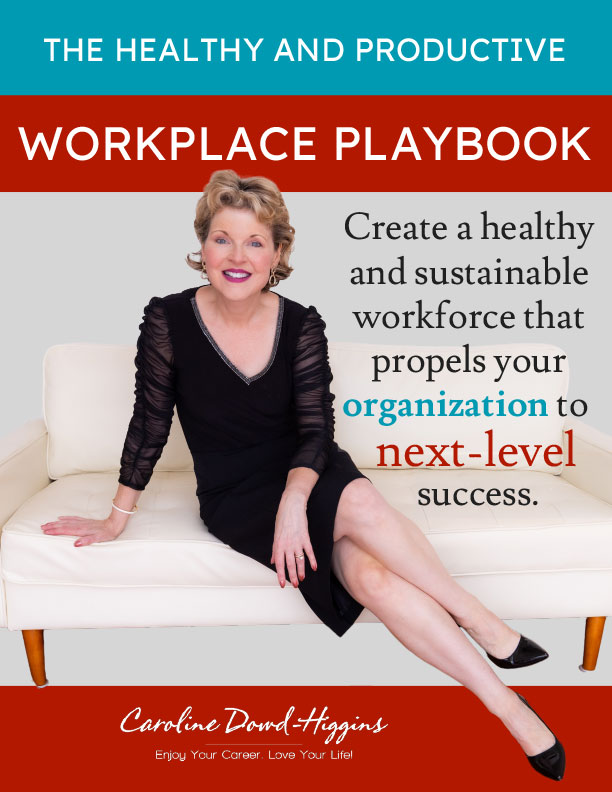Experiment with New Things to Design Your Best Life and Career

I speak to countless people who feel stuck or helpless in the wrong career, the wrong organization, or an unhappy life. The concept of design thinking will empower you with practical and creative strategies to reboot what’s not working so you can assert more control over your future.
Design Thinking, a concept birthed in the tech world, empowers you to create solutions to match your needs for a life that is empowered, authentic, and true to your unique values. This human centered approach provides a framework to experiment, test drive, and tweak to try new things by collaborating with others with a bias towards action.
Design Thinking starts with a framework of five tools that enable you to tackle complex challenges. Unlike methodologies that focus on the problem, Design Thinking is solution and action focused, enabling you to create your preferred future.
Design Thinking 5-Step Framework
- Empathize– relate with compassion to the end user and understand the problem.
- Define and Frame– explore, research, and understand context and culture of the stakeholders involved – then analyze, interpret, and plan.
- Ideate– imagine, research, and ponder innovative solutions.
- Prototype – create authentic and tangible tests or models.
- Test– try, iterate, revise after feedback, and try again as needed to fine tune.
More Than One Solution
As a career and executive coach, I often see individuals that are so laser beam focused on a single outcome that they are chronically disappointed when the goal is not exactly achieved. Design Thinking gives you permission to explore different scenarios and results that will gratify you as the end user with a continuous growth mindset.
Design Thinking celebrates curiosity, which makes everything new and invites exploration. It provides an opportunity to be curious, think visually, and foster alliances.
If you embrace the concept of being a designer in how you approach problems and challenges in your life – you will gain more control over how things play out. Designers try things, test things, revise, find what works, and embrace change. Whether you are a lawyer, an accountant, an entrepreneur, or a stay-at-home parent – you can be the designer of your own life.
Getting Un-Stuck
Often the problems we face seem so large that they paralyze us from moving forward. Instead of trying to figure out the rest of your life all at once – start smaller and more simply by focusing on the next baby step towards a solution.
Design Thinking was beautifully articulated by authors: Bill Burnett and Dave Evans in their book, Designing Your Work Life: How to Thrive and Change and Find Happiness at Work
Burnett and Evans share the concept of reframing when you get stuck with a life or career issue. Take a step back, examine the biases and move forward toward a solution using the design thinking process. Reframing is a change in perspective, and in most cases – we can all use a perspective switch.
The author-duo suggests these questions/strategies to consider:
- What perspective do you have?
- Where are you coming from?
- What other perspectives could other people have? Name them, and then describe the problem from their perspective, not your own.
- How will this problem look a year into the future?
Problem or Fact?
We can also get stuck when try to create solutions to problems that are not solvable. I believe in grit, determination, and overcoming obstacles but I also believe that we need to take a reality check to determine if what we are trying to accomplish is based in fact.
For example, maybe you have your heart set on being an NBA pro basketball player, but you stand only 5 feet tall. Height is seen as an advantage in pro basketball and even the scrappiest of shorter players are well above 5 feet tall. Could you overcome this height disadvantage and play in the pros? The fact is – probably not and the energy you use to achieve this goal might bring you more frustration and angst than gratification.
The fact remains – all NBA players are above 5 feet tall, and you will not meet that physical qualification. The reframing opportunity comes when you design a future that includes your participation as a basketball player at a competitive level on a team as part of your avocation, not your full-time career. Your passion is still alive, and you are playing the sport you love. Now, the reframe allows you to define success in different terms.
Take a serious look at the facts that may be in your way and design opportunities that can truly solve problems.
It Takes a Village to Design a Solution
Design Thinking is a process and requires you to have patience, resilience, and the open mindedness to embrace change. Burnett and Evans encourage you to write down all the questions, worries, ideas and hopes that you have and then ask yourself what to do next. By addressing the magnitude of emotions (Step 1 – Empathize) you may feel differently about how you move forward.
Successful people ask for help and this is no different in design thinking. Radical Collaboration means you aren’t alone in the process. Find a supporter(s) and share your situation and ask for feedback. Then you can begin to build a team and even a community of Design Thinkers who can assist each other with the iterative process.
Perfection is Impossible
Let go of the debilitating mindset, “I’ll be ready when…” and focus on what you can do now. Striving for perfection or absolute readiness is unrealistic and a waste of precious energy that you can be focusing on getting something done, which you are ready for now.
Career perfection is unattainable so focus on your personal best and get comfortable being a lifelong work in progress. Be open to the paradigm that success is 10% skill and 90% collaboration and ramp up your willingness to work with others to accomplish great things.
Good Enough to Go
With Design Thinking the ideation and prototyping phases of the process need not be 100% refined or polished. Ideation gives you permission to come up with multiple creative solutions to prototype and eventually test. Big hairy audacious goals are encouraged!
Seasoned designers relish the phrase, “Good enough to go!” because they know in most cases you can continue to refine the concept, product, or idea. Think of the Apple iPhone and its many iterations. I am confident there will be more to come. Rarely is something absolutely done.
Take a Risk
The beauty of approaching something new as an experiment creates space for failure and recovery. Failing forward with lessons learned is a gift and prototyping a new concept is ripe for continuous improvement and the chance to try new, innovative, and even risky things.
Companies are struggling with creating vibrant, healthy, and sustainable workplace cultures that attract and retain top talent, yet the remote work scenario is causing angst on both sides of the HR table. What would happen if you took a bold risk and experimented with the following for 90 days to design your optimal work environment?
- A Month with No Meetings – imagine a full month to hunker down, release creative juices, and celebrate dedicated time to be productive and impactful.
- Unlimited Vacation Time – some organizations are doing this with great success. What is stopping you from implementing this in your company to see what happens?
- Scheduled Dabble Time – savvy companies have dedicated time where employees can work on anything (their choice) to inspire creativity and foster collaboration. Productivity soars and workers look forward to this sanctioned innovation time.
- Flexibility Options That are Not One-Size-Fits-All – the rub with offering flexible remote work options is creating equitable opportunities and having accountability for high level work outcomes. What would happen if you allowed each employee to design their best remote/on-location schedule? It’s worth test-driving schedules designed by the talent to create environments and circumstances where people can do their best work.
- Create a Wonder Wall – this can be done in a virtual or physical space. This bank slate with the question prompt: “What are you wondering about?” provides a space for cross departmental communication. If psychological safety is part of the culture – this can be a great forum to share ideas, solutions, dreams, and developmental suggestions.
If you feel stuck or lack a vision of your future, employee Design Thinking to experiment with multiple options to see what serves you best.






